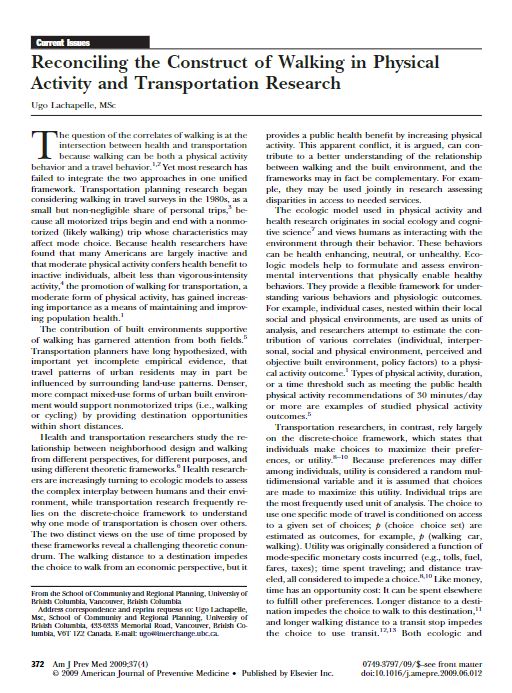Lachapelle, U. 2009, “Reconciling the Construct of Walking in Physical Activity and Transportation Research,” American Journal of Preventive Medicine, vol. 37, no. 4, pp. 372-373.
Abstract
Poor nutrition and physical inactivity are among the leading causes of morbidity and mortality in the United States, and widespread behavior modification is needed to improve health now and in the future. There is growing evidence that modifications in the physical environment and in social policies will be required to accomplish this goal. There is also growing recognition that economic factors have contributed to current eating and physical activity patterns, and that economic factors need to be considered when developing strategies for improving these behaviors. Identifying where economic and public health priorities converge could suggest new avenues for sustainable policy changes, which will, in turn, promote healthy choices on both an individual and population-wide level.
To review the effect that economics has on eating and physical activity behaviors, the Partnership to Promote Healthy Eating and Active Living convened an Economic Analysis Forum. Two working groups were formed—one focusing on eating behaviors and one on physical activity, and both with equal representation from health-related and economic disciplines. The groups examined how economics has contributed to present eating and physical activity patterns and how economics could be used to develop interventions to improve these patterns. This article describes the challenges the groups faced in their work, the way in which the public health and economic approaches were integrated, and the questions left unanswered.
